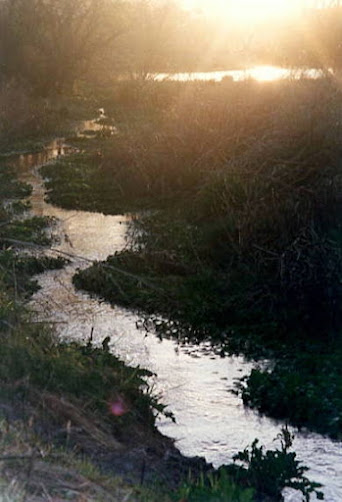The Northwest Garden in May
 |
| Rhododendron and Columbine blooms in my former Seattle garden, with lots of Cotoneaster berries for the Robins |
Because I'm a lifelong baseball fanatic, I tend towards spring gardening analogies like, "don't mourn last year's losses, this is a new season", "every day is a new chance to get a hit", etc. to keep the optimism going strong. As I'm sure all baseball lovers have experienced, this spring has been tougher than normal to keep on keepin' on... as no games at all is worse than losing, that's for sure. When bad weather, pests, and diseases get us gardeners off our game, it's important to remember that "it ain't over til it's over" applies to our gardens too! And from my point of view, a spring without gardening would definitely be worse than a few lost plants.... Well, I won't amuse you with any more baseball analogies right now, but I will give you a few tips for your May gardening:
 |
| A wheelbarrow filled with Shotweed |
1. Get ahead of the weeds:
Now that temperatures have warmed more consistently in the northwest, the weeds are growing just as fast as your other plants, and removing them now is your best chance to prevent your soil from becoming a "weed seed bank" for years to come. Shotweed has always been one of my own personal nemesis in the northwest, and as its name indicates, it has the ability to blast its seeds all around. Other weeds have evolved equally frustrating ways of sowing their seeds. So when you see any kind of weed in your garden that is beginning to flower or set seed, even if you don't have time to dig it out that day, stop and take a few minutes to at least nip off and dispose of its flower heads!
 |
| Wren nest |
Cavity-nesting birds like Chickadees and Wrens are some of the best aphid-eaters on the planet, and when their young are peeping loudly, they will do a thorough pest-patrol of the entire area around their nest to satisfy their needs. If you want your entire garden to be free from aphids, putting up a nest box is an excellent place to start! In our urban and suburban neighborhoods, there are very few standing dead trees for cavity-nesters to build in, so a properly-built nest box mimics a tree cavity and instantly attracts these beneficial (and sweetly-singing) birds. Build your own using info from Russell Link's excellent book "Landscaping for Wildlife in the PNW", or from his instructions on the WA Dept of Fish & Wildlife website: http://wdfw.wa.gov/living/projects/
 |
| Bumblebee on an apple blossom |
Codling Moth and Apple Maggot are the two worst insect problems for northwest fruit trees.
In most years, the Coddling Moth will begin flying sometime during May. This pest can greatly damage Apple, Pear and Plum trees. City Fruit is a fabulous Seattle-based non-profit that has been helping homeowners with their fruit trees in many ways, for many years. They recommend using only non-toxic weapons in your prevention and mitigation strategies, and their website is chock full of recommendations for successful, chemical-free management of Coddling Moth and other fruit tree pests. Check out this free pdf download for a variety of successful Coddling Moth controls!
Another Coddling Moth strategy that's becoming more common for homeowners as well as commercial orchardists is called mating disruption. Here's how it works: The female moth releases a specific chemical, a pheromone, that attracts the male moth. The male moth can detect extremely small amounts of the this pheromone and will fly to locate the source, the female, in order to mate. Mating disruption dispensers release this same pheromone and, when placed properly in the upper third of the tree canopy well before the earliest moth emergence, they inhibit the ability of the male moth to locate and mate with the female. Mating will be reduced, the number of eggs laid and the number of larvae in your fruit will be reduced. Click on this link for a good article article on this strategy.
Now is a great time to get started planning your Apple Maggot strategies too, so you can be ready to implement them when the fruit grows to the size of a golf ball. Click on this free downloadable pdf for a good
summary of the Apple Maggot Fly's life cycle, how to make sticky traps to monitor the flies, and how to
apply "footies" or other barriers on the fruit when it has reached golf ball size and the clusters are still easy to thin. These barriers let the sun in and provide plenty of room for the fruit to fully ripen, but prevent the flies from being able to smell the fruit (because
they use their feet to smell!) and from laying
their eggs on it. At the Magnuson Community Garden Demonstration Orchard, volunteers have also had great success by using fine netting over the top of dwarf and espaliered trees as a barrier, once the flowers have been pollinated. The netting keeps the crows from knocking the ripe fruit off the branches later in the year too!
Photo credits:
All photos by Emily Bishton


